The José Martí Memorial Site: the Highest Spot of Havana
especiales

The José Martí Memorial is one of the most emblematic sites of Cuba in terms of the text compilation and personal history about the main Cuban hero. It is located on the bottom section of the monument dedicated to José Martí at the local and historic Revolution Square. It is regarded as the highest place in Havana city.
The José Martí Memorial was inaugurated by the Cuban president Fidel Castro on January 27th, 1996, but his beginning dates back to the first quarter of the XX century when it was designed a urbanization plan for the Cuban capital that would have a civic center as its core of which its plot of land would be the Loma de los Catalanes hill. It is among among the main urban areas of the time such as El Vedado, El Cerro, Marianao and Centro Habana neighborhoods.
In 1937, it was convened a Pan American related contest for the monument of which its results were unfavorable ones as any of them could not be presented, but they useful to successive contests in 1939, 1940 and 1943, respectively.
That last year was the definitive one as the first place was granted to the design of the architect Aquiles Maza and the sculptor Juan José Sucre was entitled´ Templo Martiano´ or ´Templo de las Americas´ and it was to create a library with its related museum in the internal section of the obelisk where it could be preserved the ideal of the Cuban national hero.
The second prize was granted to the local architects Govantes and Cabarrocas who presented the project about a monumental library as a homage to José Martí which was first built and it is located one of the sides of the Revolution square and its name is the Jose Martí National Library.
The third prize was won by Enrique Luis Varela at the head of a team of architects and he was then directing a team of architects. His work showed an obelisk with a plant with five vertexes as a symbol of freedom and independence.
After Fulgencio Batista took power on March 10th, 1952, decided to decree the construction of the monument as a way to clean his dirty image of the violence. He signed a decree that imposed the collection of a working day for each worker, as well as increasing the taxes and using other methods to obtain money to finance the construction.
The prevailing corruption of that government caused some scandals in relation to the constructive projects by having started from the awarding to the winner of the third prize to favor him before the then local secretary of the Public Works. The Press of that time showed the abuses committed against the poor neighborhoods which were in the area of the civic center.
It was precisely the young lawyer, Fidel Castro, who assumed the defense of the dwellers of the then ´La Pelusa´ poor neighborhood who were threatened by the expropriation of its houses to favor the robbery of the funds planned to be used to that work of that monuments complex.
Its construction began in 1953 and by the end of 1958, the obelisk and its statue desiccated to José Martí had been erected, but the surrounding areas and its platform were then missing. It was not until 1961, after the triumph of the Revolutionary triumph, that it was completely built.
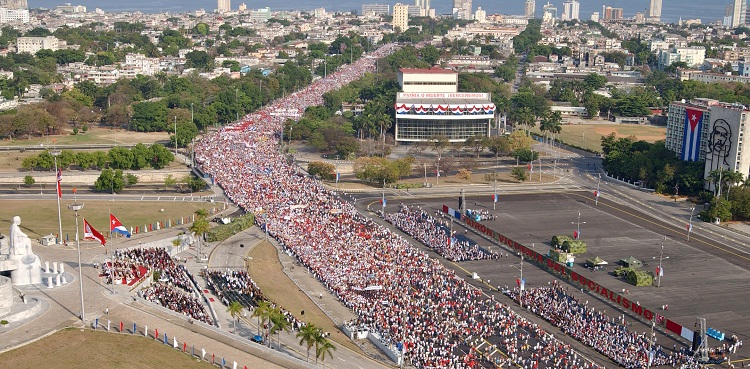
The statue of José Martí is in the center surrounded by six illuminated columns with engravings about civic scenes. These ones represent the six provinces in which it was divided the national territory at that time. The marble tower is 109 meters tall.
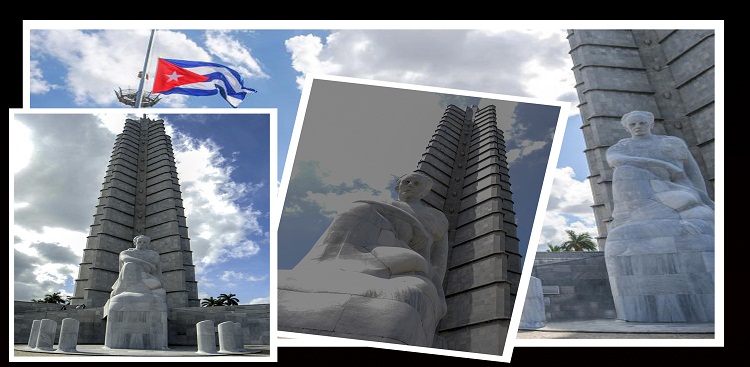
The memorial was the first venue of the Museum of the Revolution which was transferred to the Museum of the Revolution later. It houses exhibition rooms and rooms for the celebration of meetings, as well as being one of the main tourist attractions of the Cuban capital.
Having a star-shape structure, it is a cultural and historical center of five rooms. The first ones were dedicated to promote the life and work of José Martí, the third one shows images and related documents about the construction process of the local Revolution square, the fourth room is the theater and the fifth one is used for transitory exhibitions.
Its lookout, which is accessible through a small elevator, offers exceptional views of the city. The visitors, both Cubans and foreigners, may have access to the highest spot of the Cuban city with 141 meters over the seas level and it offers a 50 kilometers view around it.
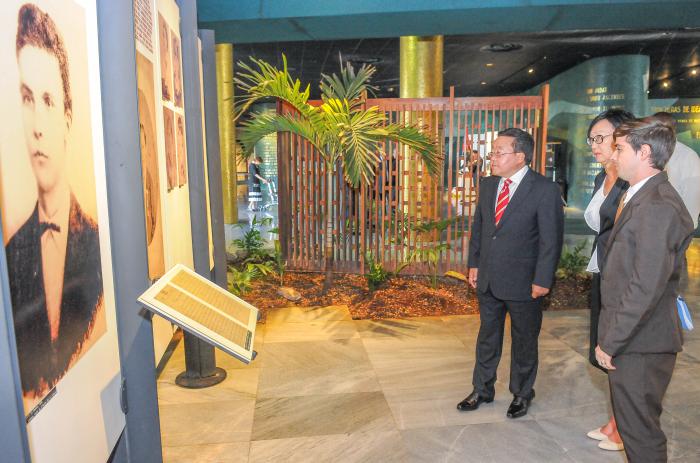
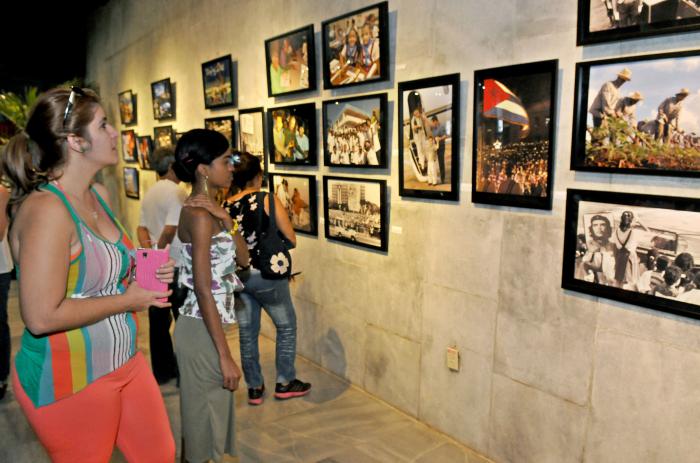
As an interesting piece of information, there is a compass card on the floor of that lookout building that allows the geographic orientation and measuring the direct distance in terms of kilometers that exist between that monument and the different nations of world, including the places linked with the life of José Martí like the local one named Dos Ríos and up to six provinces that existed by the time that tower was built.
Surrounded by cultural institutions like the José Martí library, the National Theater and at the back of the local Bandera square, the José Martí memorial is a way to revitalize its ideal when he stated: ´It is necessary to be as high as the hills to be seen from a long distance.´
In front of the entrance of the Memorial and on its first floor, surrounded by a Cuban landscape and the flag of Cépedes and the Cuban one, there is a bust about José Martí which is a work made by the sculptor Jilma Madera.
It is also exhibited a unique work. It is about the Venetian ceramic mural that was made by the Cuban artist Enrique Carabia. Its main color is the green one. It shows 89 texts and words about Jose Martí through 10 laminated golden 10-carat words.
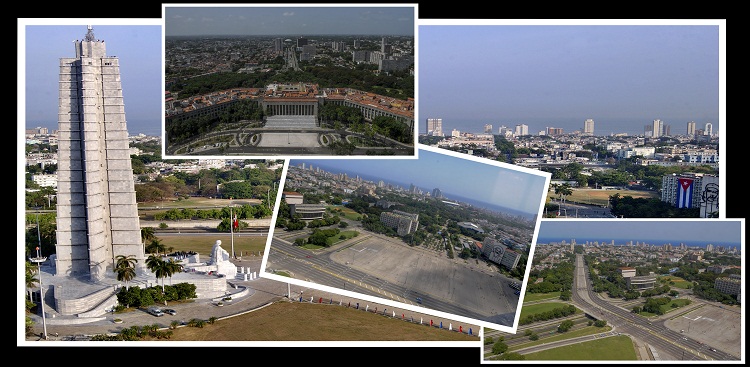
A specialized staff welcome the visitors to the Memorial which treasures personal objects of José Martí, drawings, engravings, editions of his books and objects linked to his life which are shown in there, including the Arts university certificate delivered by the University of Zaragoza and a dissected Quetzal bird that was given to him by the then President of Guatemala, Justo Rufino Barrios and the first written letter by the patriot to his mother, Leonor Pérez when he was barely nine years.
In addition it is also on display the note written by José Martí to the general Máximo Gómez some hours before his fallen in combat in Dos Ríos area.
Visitors from all over the world approach to one of the most emblematic sites of Havana city, The Cubans perceive the José Martí Memorial as a symbol of the National history and that is why, they always return to the institution to remember the hero of the independence and watching the city where he was born from its highest spot.


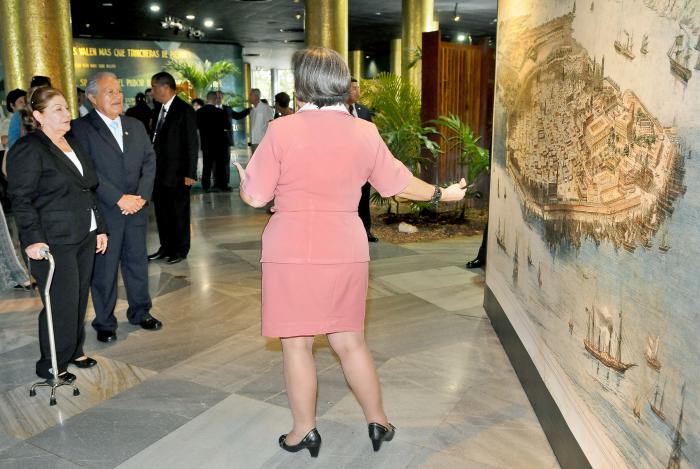


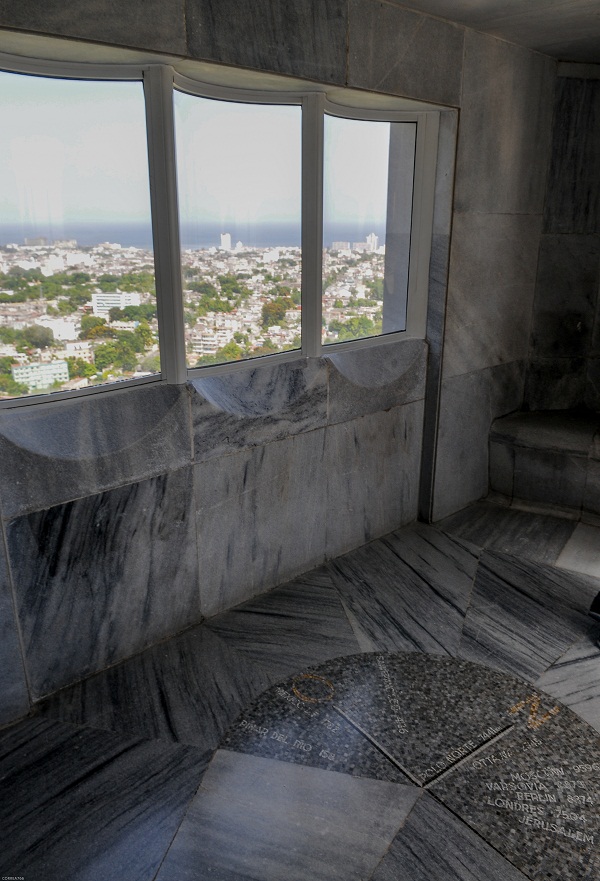
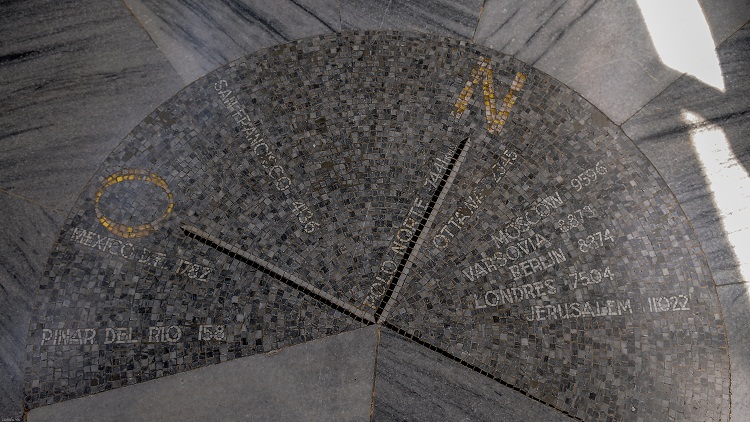
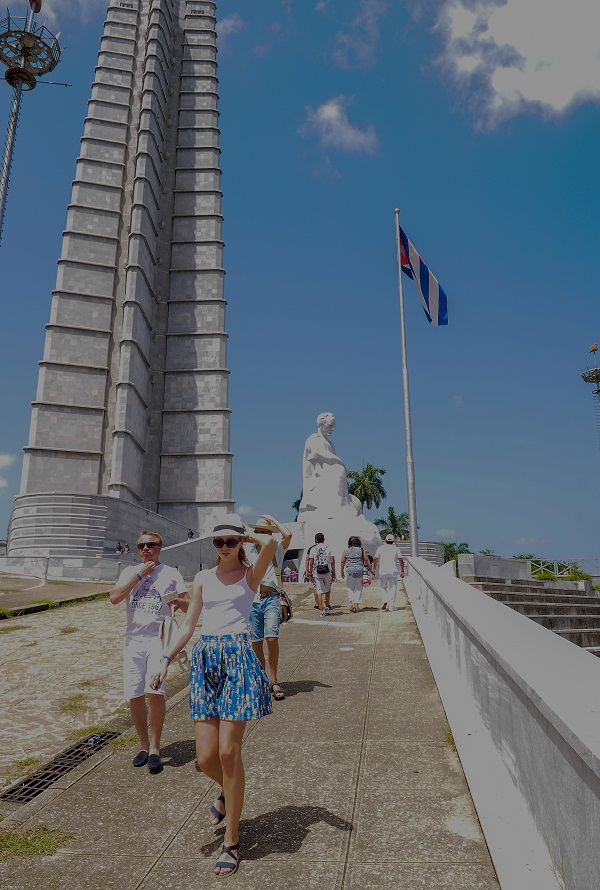
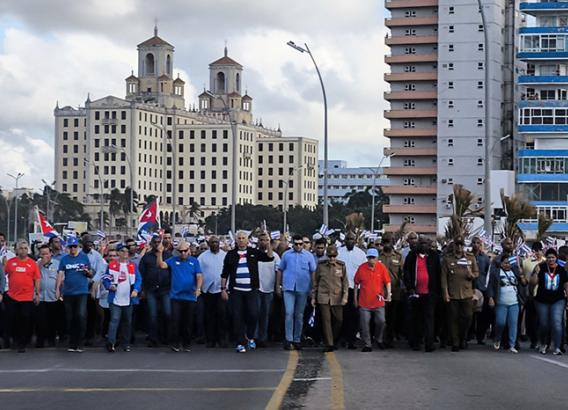
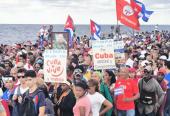

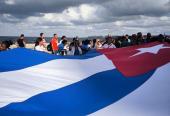
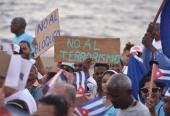



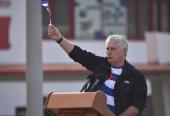
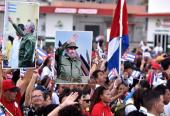

Add new comment